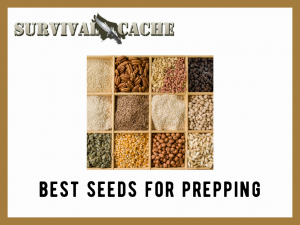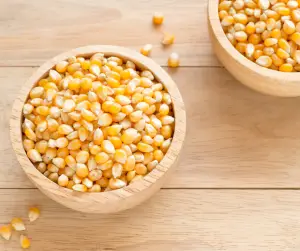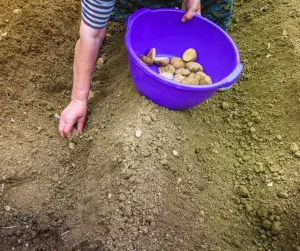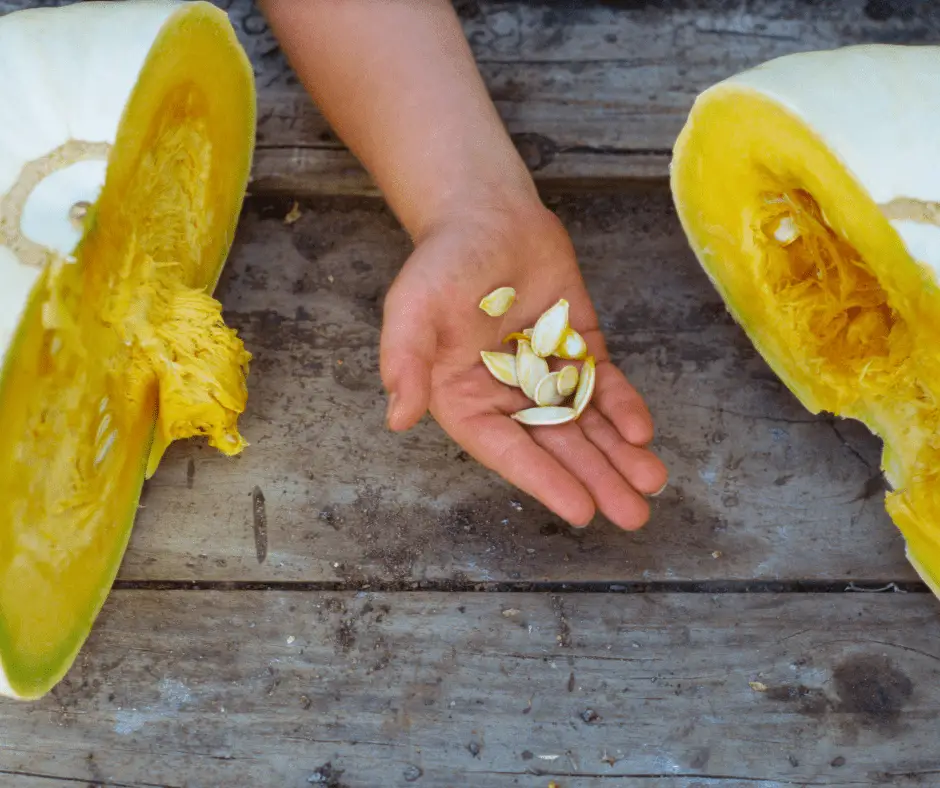Food is a popular topic when it comes to prepping, as it should be. Usually, the conversation is dominated by food items like flour, rice, beans, canned goods, and prepackaged emergency survival food.
All of which are mighty good options to have when preparing for an emergency.

The old recommendation was to have at least three days of food to get through an emergency. Then that recommendation became a week, two weeks, a month.
Now, depending on what source you read, that recommendation could be anywhere from a few months to six months to an indefinite amount of time.
Ideally and logically, we should all be as self-sufficient as possible so that these ever-increasing time frames will not be as strenuous when disaster strikes.
But creating a long-term stockpile of food for one person can be quite the project, which becomes compounded for a family of three, four, or more.
Eventually, the last can of food will be eaten, and the last pouch of emergency food rehydrated.
And this is why growing a garden or at a minimum, storing viable seeds should be a part of everyone’s preparations. Because no matter how prepared a person is, at some point, there will be a need for a renewable and sustainable food source.
SKIP AHEAD
Types of Seeds
Before rushing out to buy them you should know about the different types of seeds. Be sure to do your research and read all labels on seed packets because not all seeds are the same.
Heirloom Seeds
These are seeds from plants that have been around for a long time without being altered. They produce plants with characteristics that are both desirable and stable.
Sowing these seeds will result in plants that will produce viable seeds that can be replanted, and the seeds may be collected year after year.
Most people believe heirloom seeds produce the best tasting fruits or vegetables. These seeds are also preferred because they are viewed as “natural” seeds.
Hybrid Seeds
These seeds are the result of cross pollination between two plants with different characteristics. This process is continued until a plant has all the traits desired by the grower.
The desired traits can be anything that the grower is looking for such as larger leaves or flowers, color, larger crop yield, size of the plant, or resistance to temperature, drought, or insects.
It can take several generations of growing to achieve the specific desired traits. But once a hybrid is created and used for years without alteration, the seeds can be considered an heirloom.
Genetically Modified Seeds (GMO)
These types of seeds have been created in laboratory settings and are altered on the genetic level. In broad terms, this is done by taking a specific gene from another living organism and inserting it into the genes of the seed.
Genetically Modified seeds are primarily used on the commercial level. Because of this, the goal of GMOs is to create a plant with traits that have higher crop yields, are drought or pesticide-resistant, and can grow in unfavorable conditions.
Genetically modified seeds are generally frowned upon by home gardeners because they have not been around for a long time, possible side effects are unknown, and they are “unnatural.”
Best Seeds For Prepping: What to Stockpile?
There are a lot of different seeds that can be stored and ultimately the best ones will be determined by your tastes and growing abilities. But to start that process along, listed below are five plant suggestions that are popular choices for the garden that are both filling and nutritional.
Corn
Corn is a great plant to grow because it can be eaten in a variety of ways. It can be cooked, boiled, eaten raw or dried and ground into flour.
Corn is high in fiber, B vitamins, zinc, magnesium, copper, iron, and manganese.
Potatoes
While potatoes have been nicknamed a “starvation food” know that when growing them from seeds, it will take two growing seasons before they produce any potatoes.
But potatoes are a versatile food that can be baked, boiled, and used in a multitude of recipes.
Potatoes are high in carbohydrates, fiber, potassium, and vitamins C, B6.
Beans
Depending on the type of bean, they will grow as bushes or as a climbing vine.
Beans can be eaten raw or cooked and used in a variety of recipes. Additionally, when beans are dried out, they store for an extremely long time.
Beans are high in protein, fiber, folate, and antioxidants
Spinach
Spinach is a great leafy green to grow because it can provide a couple of harvests in a single year. It can also be eaten raw, used in salads, or used in many different dishes.
Spinach is high in fiber, iron, magnesium, potassium, folate, and vitamins A, B2, B6, C, E, and K.
Squash
One benefit of growing squash is that it provides a lot of ground coverage that inhibits the growth of weeds and helps the soil to retain moisture.
It also has a great shelf life, lasting up to several months sitting on the kitchen counter.
Squash is high in carbohydrates, folate, magnesium, fiber, riboflavin, phosphorus, potassium, and vitamins A, B6, and C.
Additional Seeds
Here is a small list of some popular herbs or plants you may also want to store seeds for that can be easily grown outside or indoors.
- Mint
- Parsley
- Basil
- Dill
- Rosemary
- Sage
- Thyme
- Fennel
- Lemongrass
- Chamomile
- St. Johns Wort
- Chives
- Catnip
- Bay leave
- Peppermint
- Oregano
The Three Sisters Growing Method
Even though this is an article about stockpiling seeds, I would be remiss if I did not mention this growing method because it works so well.
The Three Sisters is a companion method of growing that has been around for a very long time and was popular with Native Americans.
It consists of planting three different plants, corn, squash, and beans close to one another because they all complement each other in some way.
The corn stalk provides a structure for the climbing vine of the beans to grow on. The beans provide nitrogen to the soil. And the squash provides a ground coverage that acts as both an inhibitor to weed growth and mulch for retaining soil moisture.
Open Questions
Q: How should seeds be stored?
A: After collecting seeds from a harvest, they can be rinsed off with clean water. Place the seeds out on a paper towel and allow them to thoroughly dry.
Once the seeds are dry, a popular and cheap method for storage is to place them into small paper bags or envelopes. A glass jar or other container that can be sealed also works well. These seeds can then be placed either in the refrigerator or freezer which helps to keep them viable.
Q: How long can seeds be stored?
A: Many seeds stored in the above method can remain viable for several years.
However, there are seed vaults that some call “doomsday vaults” scattered around the world. These vaults have been put in place for worst-case scenarios in which the world needs to begin anew.
Inside these vaults, seeds are stored in special foil-wrapped packages that are kept at extremely low temperatures and humidity. Some of the seeds within these vaults are said to be viable for decades or even hundreds of years.
Wrap Up
No matter how we choose to stock our pantries, storing seeds will be essential in keeping us fed with fresh foods for a healthy and balanced diet.
I highly encourage everyone who does not have a garden but enjoys fruits, vegetables, and spices to take the time to start growing something today. If space or finances are an issue you can easily start by growing one plant indoors. You never know, you just may have a green thumb.
Thanks for reading and stay prepared!
What kind of seeds are your favorite and how do you like to store them? Sound off in the comment section below and let us know!





